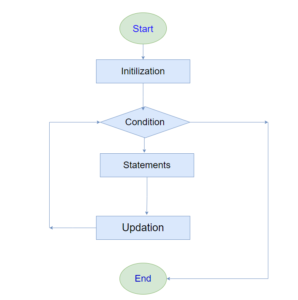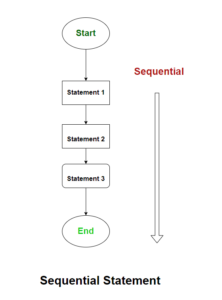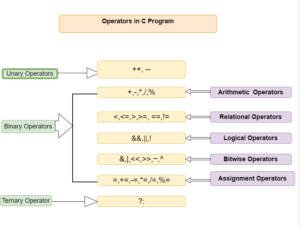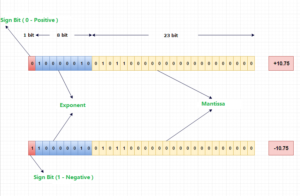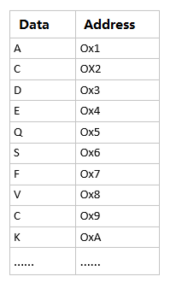Chapter 1 Introduction to C Language
- What is C language?
- History of C Language
- Features of C Program Language
- What Are the Disadvantage of C Programming Language ?
- Analysis of the Main Application Fields of C Program Language
- Why Learn C Program Language?
- Downloading and Installing the GCC Compiler for C Language Under Windows Environment
- Why Choose the Code Block Compiler?
- Hello World! Your first C program
- Detailed Explanation of the Compilation and Linking Process of C Program Language
- How Does Preprocessor Work in C ?
- A List of C Library Functions and Header Files
Chapter 2 Basic of C Language
- The Program Structure of C Program Language
- Basic Syntax of C Program Language
- The Semicolon (;) is Used to Terminate Statements
- C Language Identifier
- C Program Language Token
- Introduction of printf() function
- A Placeholder in C Program
- Escape Sequences in C
Chapter 3 Data Types of C Language
- Data types in C Program
- Memory and variables in C language
- The Relationship Between Variables and Memory
- Conversion between decimal and binary
- How to Convert Decimal to Hexadecimal?
- How to Convert Hexadecimal to Binary
- Relationship Between Memory and Data Types
- Storage of integers in the computer, character data type and character variables
- Literals in C Programming
- Character Literals and Escape Sequences in C Programming
- How does Sign-Magnitude and Two’s Complement Work ?
- Integer Data Type, Integer Variables, Integer Variable Overflow.
- The Storage of Floating-Point Variable, Float Type and Float Variables
- Why do integers stored in computers in the form of complement?
- What is complement? Expression of binary complement (optional course)
- Real number type, floating-point variables, storage of floating-point variables
- Conversion of decimal fractions to binary formats
- Difference between integer data types and floating-point data types
- Binary representation of negative numbers
- Rounding error of C language real-type data (optional)
- The Binary Representation of Positive and Negative Numbers
- Complete table of C language escape characters and ASCII codes
- Constants in C language
- Difference between variable definition and variable declaration in C language

Chapter 4 Operators of C Programming
An operator is a symbol that operates on a value or a variable. For example: + is an operator to perform addition. C has a wide range of operators to perform various operations.
- C Program Operators
- C Programming : Arithmetic Operators
- Increment and Decrement Operators
- C Programming : Assignment Operators
- C Programming: The sizeof Operator
- C Programming: Relational Operators
- C Programming: Logical Operators
- C Program : Bitwise Operators
- C Operator Precedence and Associativity
- Explicit Type Conversion (Type Casting) and Implicit Type Conversion (Automatic Type Conversion)
- C Programming: The sizeof Operator
Chapter 5 Input/Output (I/O)
- printf( ) function in C Program
- C Input Function : scanf() in C Program
- What is the Difference Between printf() and scanf() ?
- Input/Output Format Specifiers in C Program
Chapter 6 Conditional Statements
- Basic structure of C Program statements
- Branch statements in C Program
- IF statement and IF ELSE statement in C language
- Ternary Conditional Operator in C Program
- if-else-if Ladder Statements and Nested if-else Statements in C Program
- Issues to note when using IF statement
- Switch statement and nested switch statement in C language
Chapter 6: C Language Loop Statements
- Loop Statements in C Program
- While loop statement in C
- Do-while loop statement in C
- For loop statement
- for Loop Statement and Loop Nesting in C Program
- goto Statement in C
- break and continue Statements in C
- Using infinite series to calculate the value of π in C
- How to determine if a number is prime in C
Chapter 7: Strings and Arrays in C Language
- What are strings in C?
- Input/output functions for characters and strings in C
- Functions for manipulating strings in C
- How to convert a string to a number in C
- Arrays and their applications in C
- Two-dimensional and multidimensional arrays in C
Chapter 8: Pointers in C Language
- What are pointers in C?
- How do pointers work?
- Pointer declaration and initialization in C
- Pointer types in C
- Address-of and indirection operators, as well as operator precedence for pointers in C
- Pointer operations between variables in C
- Pointers and arrays in C
- Pointers and strings in C
Chapter 9: Functions and Function Calls in C Language
- Overview of function applications
- Function definition in C
- User-defined functions in C
- Parameters and formal and actual parameters in C
- How to call a function in C
- Nested function calls in C
- Recursive functions in C
- Functions with pointers as arguments in C
- Functions with array names as arguments in C
- Function pointers in C
- Pointer functions in C
- Parameters of the main function
Chapter 10: Preprocessor Commands and Macro Definitions in C Language
- Overview of preprocessor commands in C
- What are macros in C? What are parameterized macros in C?
- Differences between parameterized macros and functions in C
- Predefined macros and file inclusion in C
- Conditional compilation in C
- Summary of preprocessor commands and macro definitions
Chapter 11: Structures and Unions in C Language
- Structures in C
- Three ways to declare structure variables in C
- Assignment and initialization of structure variables in C
- Definition and manipulation of structure arrays in C
- Explanation and usage of structure pointer variables in C
- Unions in C
- Differences and advantages and disadvantages between structures and unions in C
Chapter 12: Storage Classes and Memory Management in C Language
- Local and global variables in C
- Dynamic storage and static storage in C
- Storage classes auto, extern, static, and register in C
- How to call a function in another file in C
- Dynamic memory allocation in C
- Dynamic arrays in C
- Implementation of linked lists in C
- Enumerated types in C
- Typedef type definition specifier in C
- Differences between typedef and #define in C
Chapter 13: File Management in C Language
- Overview of files in C
- Opening, reading, and writing files in C
- File management functions in C
Chapter 14: Bitwise Operators in C Language
- Bitwise operators in C
Chapter 15: Programming Exercises in C Language
- Programming exercises in C language
- Arrays and pointer exercises
- Decision and loop statement exercises in C
- Functions exercises in C
C language is a general-purpose, procedural programming language. In 1972, Dennis Ritchie designed and developed the C language at Bell Telephone Laboratories for the purpose of porting and developing the UNIX operating system.
Students use C to learn programming, but its role goes far beyond that. It is not only an academic language. It is not the simplest language because C is a very low-level programming language.
Today, C is widely used in embedded devices and drives the majority of Internet servers built with Linux. The Linux kernel is written in C, which also means that C drives the kernel of all Android devices. It can be said that at this moment, a large part of the world is running on C code, which is amazing.
C brought an easy-to-implement language, and its compiler could be easily ported to different machines.
- C is a compiled language, like Go, Java, Swift, or Rust. Other popular languages, such as Python, Ruby, or JavaScript, are interpreted languages. The difference between compiled languages and interpreted languages is constant: compiled languages generate binary files that can be directly executed and distributed.
- C does not support garbage collection, which means we must manage memory ourselves. Managing memory is a complex task that requires extreme care to prevent defects, but C has become the ideal language for embedded device programming, such as Arduino.
- C does not hide the complexity and capabilities of the lower-level machine. Once you know what you can do, you can have tremendous power.
- C programming is considered the foundation of other programming languages, which is why it is called the mother tongue.
C language can be defined in the following ways:
- The foundation of all modern programming languages
- System programming language
- Procedural programming language
- Structured programming language
- Intermediate programming language.
The Difference Between C Program and C++ Program in Tablet Format
| C Program | C++ Program |
|---|---|
| C is a procedural programming language. | C++ is an object-oriented programming language. |
| C programs use functions to organize code. | C++ programs use classes to organize code. |
| C does not support function overloading. | C++ supports function overloading. |
| C does not support namespaces. | C++ supports namespaces. |
| C does not support exception handling. | C++ supports exception handling. |
| C programs use structures to group related data. | C++ programs use classes to group related data and functions. |
| C programs have simpler syntax and fewer keywords. | C++ programs have more complex syntax and more keywords. |
| C does not support templates. | C++ supports templates. |
| C programs are typically faster and more efficient. | C++ programs are typically slower and less efficient due to the additional overhead of object-oriented features. |
the Difference Between C Program and Python Program
| C Program | Python Program |
|---|---|
| C is a compiled language, which means that the code needs to be compiled before it can be executed. | Python is an interpreted language, which means that the code can be executed directly without needing to be compiled. |
| C is a statically typed language, which means that the data type of a variable must be declared before it can be used. | Python is a dynamically typed language, which means that the data type of a variable is determined at runtime. |
| C is a low-level language, which means that it gives the programmer direct access to the computer’s hardware. | Python is a high-level language, which means that it provides a lot of built-in functionality that makes programming easier and more efficient. |
| C programs typically require more lines of code to achieve the same result as a Python program. | Python programs are typically shorter and more concise than C programs. |
| C programs can be more efficient than Python programs because C code can be optimized to take advantage of the computer’s hardware. | Python programs can be less efficient than C programs because they run in a virtual machine and are subject to interpretation overhead. |
| C has a more limited standard library than Python, which means that developers need to write more code from scratch. | Python has a comprehensive standard library that provides a wide range of built-in functionality. |
| C is often used for system-level programming, such as operating systems, device drivers, and embedded systems. | Python is often used for web development, data analysis, scientific computing, and artificial intelligence. |

